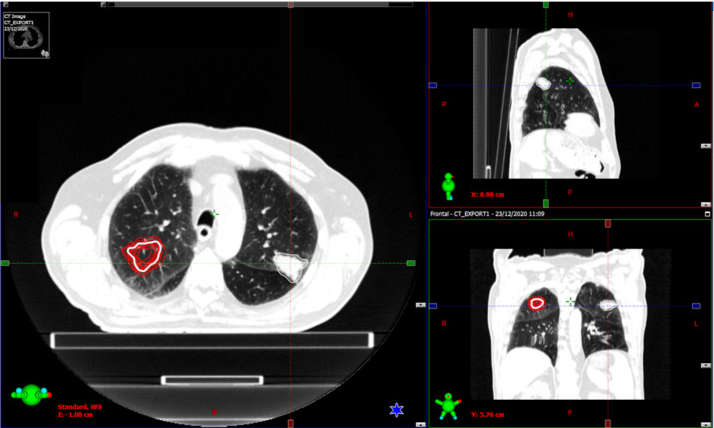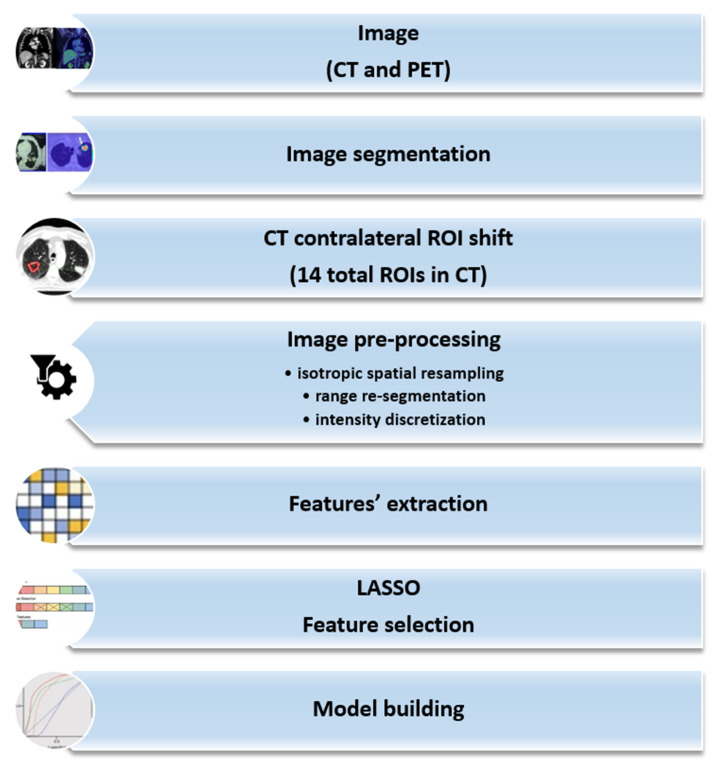Novel Harmonization Method for Multi-Centric Radiomic Studies in Non-Small Cell Lung Cancer
The purpose of this multi-centric work was to investigate the relationship between radiomic features extracted from pre-treatment computed tomography (CT), positron emission tomography (PET) imaging, and clinical outcomes for stereotactic body radiation therapy (SBRT) in early-stage non-small cell lung cancer (NSCLC). One hundred and seventeen patients who received SBRT for early-stage NSCLC were retrospectively identified from seven Italian centers. The tumor was identified on pre-treatment CT and PET images, from which 3004 quantitative radiomic features were extracted. The primary outcome was 24-month progression-free-survival (PFS) based on cancer recurrence (local/non-local) following SBRT. A harmonization technique was proposed for CT features considering lesion and contralateral healthy lung tissues. Models with harmonized CT features demonstrated better performances compared to the ones using only original CT features. A linear support vector machine (SVM) with harmonized CT and PET features showed better predicting performance in an external validation cohort. The addition of clinical features did not enhance the model performance. This study provided the basis for validating our novel CT data harmonization strategy, involving delta radiomics. The harmonized radiomic models demonstrated the capability to properly predict patient prognosis.


Ultimo aggiornamento: 27/02/25
